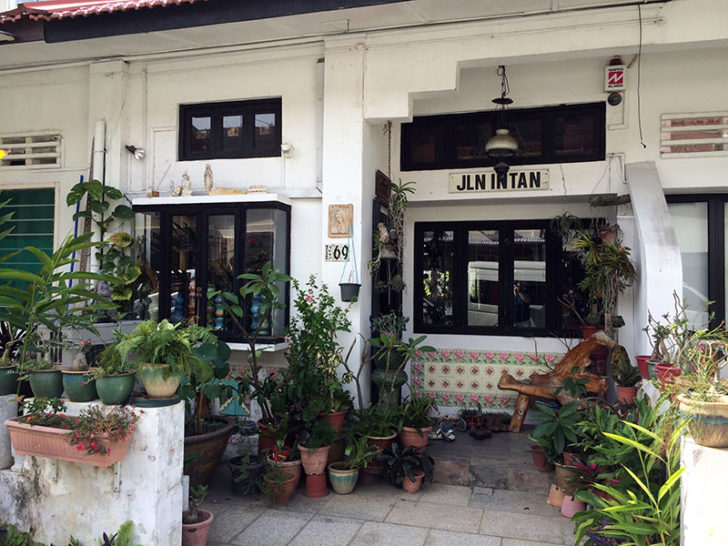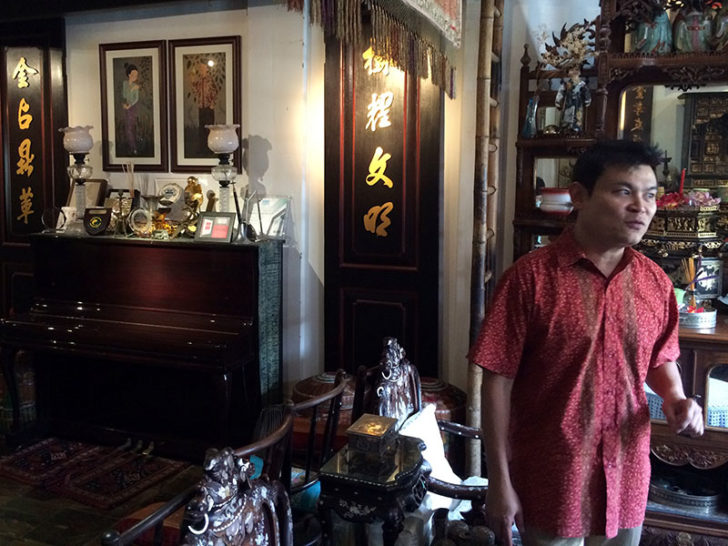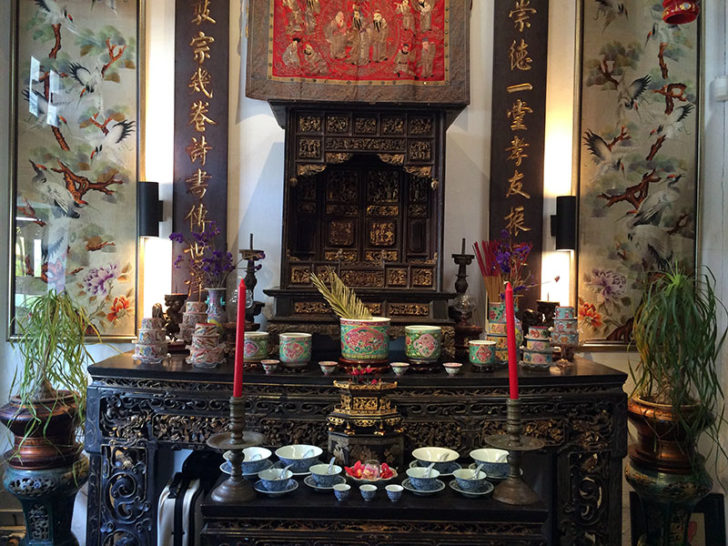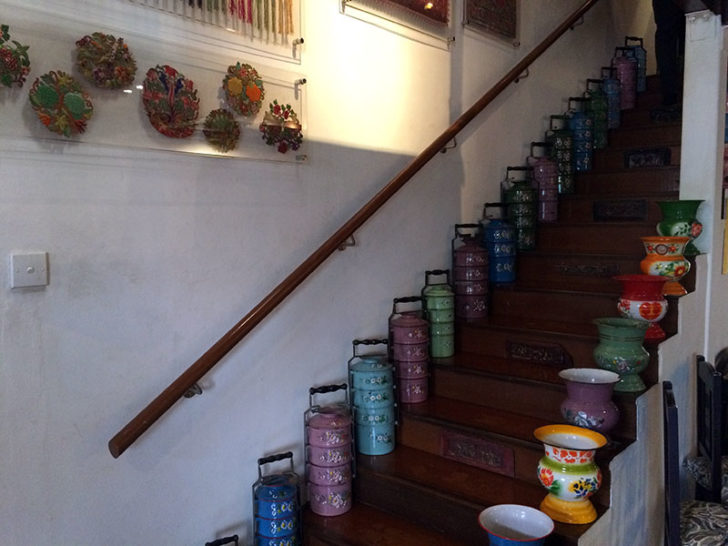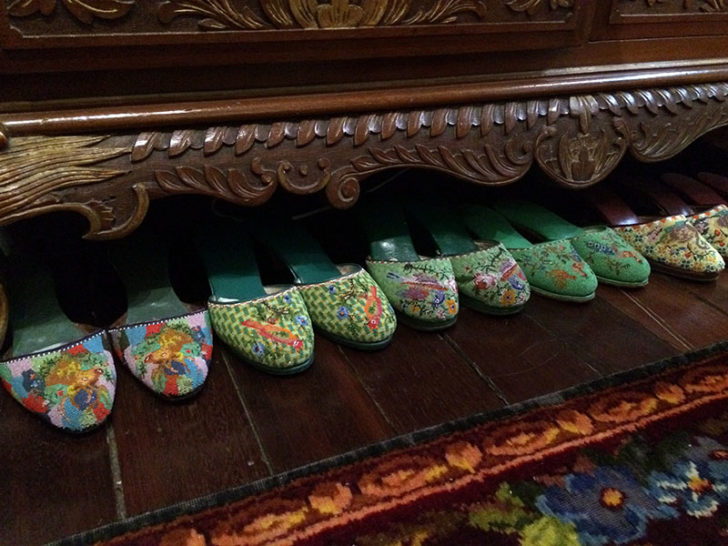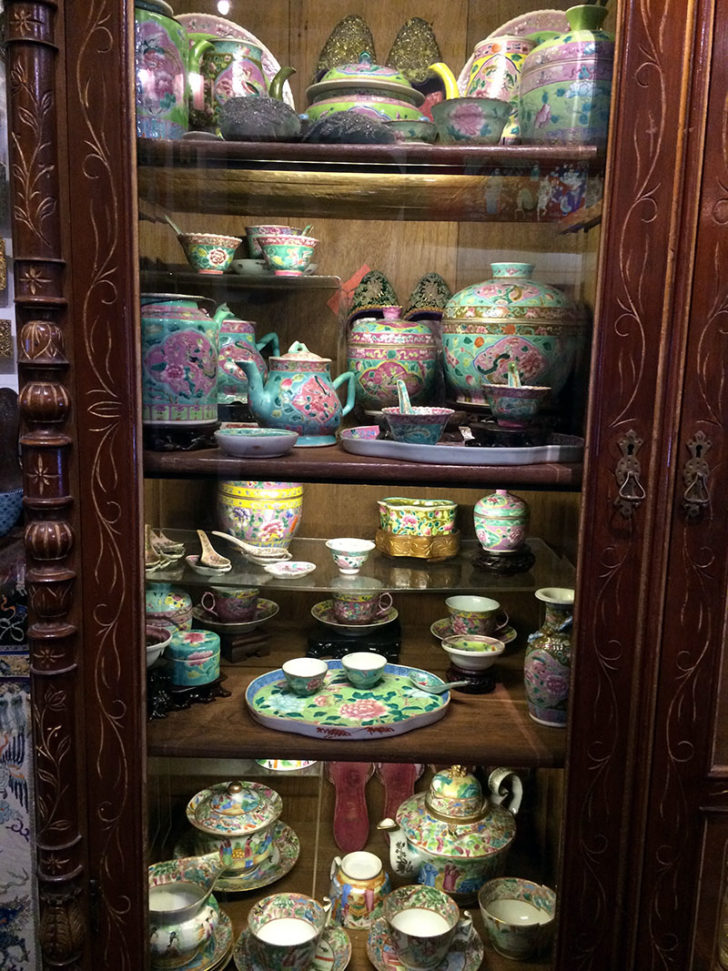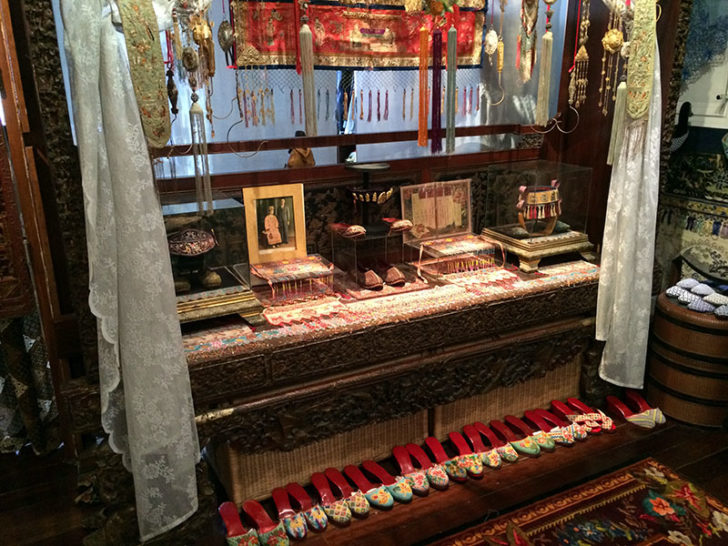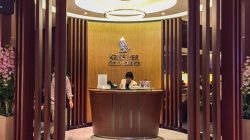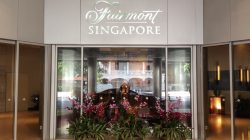You probably know about Singapore’s multi-ethnic society and the endless variety of food stalls and restaurants. Colonization by the British created a strong Western influence, but the population is principally of Chinese, Malay, or Indian descent. Many of these Chinese immigrants created a unique Peranakan culture that I didn’t know existed until my most recent visit to the city and the private Intan Museum.
After navigating several narrow roads to find The Intan, we almost didn’t realize we’d made it. The building looks like any other house in Singapore’s suburbs, with some new construction nearby suggesting that — even here — nothing is immune to the march of progress.
But that’s why its owner, Alvin Yapp, has spent years and thousands of dollars collecting items from Singapore’s past.
Peranakan means “descendent” and refers to those Chinese who immigrated to the Malaysian peninsula to work and send money back home, but eventually they settled in the area and created their own variant on Malay culture. Peranakan Chinese were largely loyal to the British, but there were enough wealthy Chinese who could fight to preserve their own culture while choosing which foreign (British) elements they wanted to integrate into it. Thus Peranakan culture was as a way for locally born and assimilated Chinese to retain a common identity and also differentiate themselves from those who arrived later.
You can see the influence of Western design in some of the more expensive furniture at the Intan. Rectangular tables (rather than round) and carvings of eagles in wood aren’t what you would expect in a traditional Chinese home. Peranakan food is also much more similar to Malaysian cuisine while retaining some Chinese influence.
Enamel tiffin carriers — metal lunch boxes with multiple compartments that lock together — hang from the roof in the kitchen and stand along the stairs. These were imported from Poland and Czechoslovakia and are brightly painted. I’ve been a fan of tiffin carriers for a few years now, using them to separately pack hot and cold dishes I can reassemble later after reheating at work. They’ve fallen out of favor in Singapore but are still widely used in other parts of the world like India.
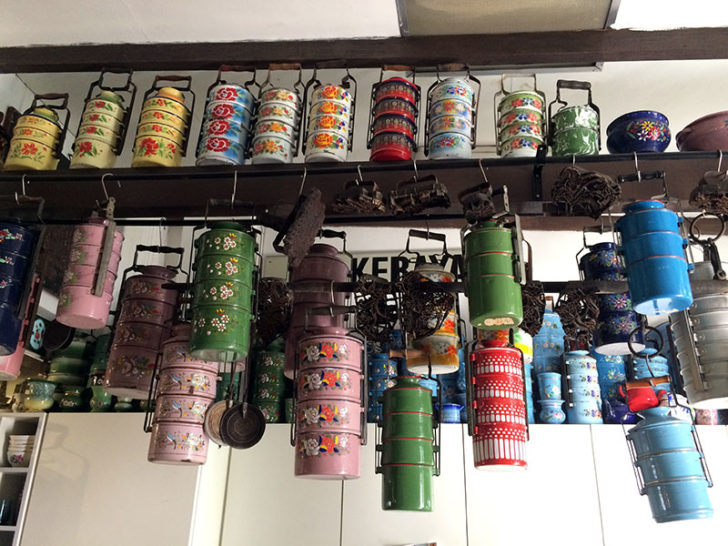
Upstairs is where Alvin keeps much more intricate creations, including a huge collection of beaded slippers that were most popular in the early 1900s. Both men and women would wear these for special occasions. Some of the designs are particularly elaborate and could take days to make by hand. But while he said he used to buy them up cheaply or receive them as gifts, the shoes — like much of the furniture and other items within the Intan — have become more expensive. Other Singaporeans are starting to realize that this culture might be lost as the city urbanizes.
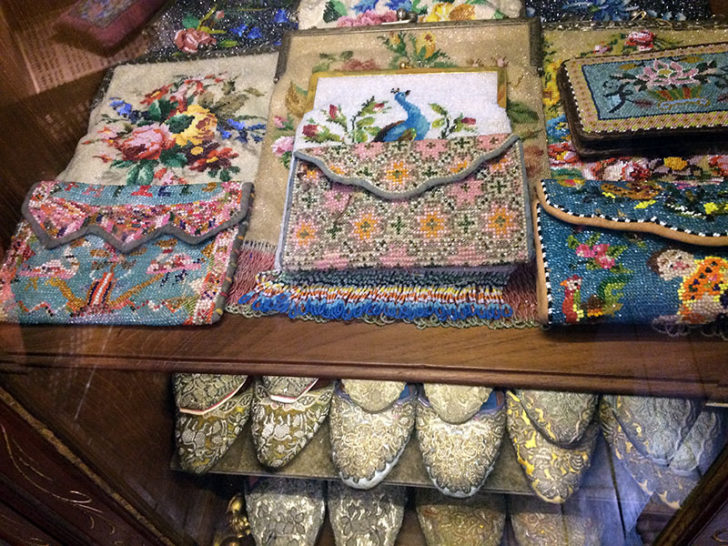
Singapore now has greater GDP per person than the United States, which is a startling change for a city-state that seemed alone and lacking any resources just 50 years ago. But one part of Singapore’s “success” was teaching its citizens to ignore their separate backgrounds and work together. Alvin started the museum in part because of how surprised he was by the way people in San Francisco celebrated their own ethnicity.
The Intan is now well regarded in the city, has won a few awards, and is highly rated on TripAdvisor. The much larger and “official” Peranakan Museum has even asked Alvin for assistance curating their collection. One virtue of the Intan is that its intimate space makes it much easier for visitors to experience Peranakan culture at a human scale, without the glass shields or podiums that you’d find in an exhibit hall.
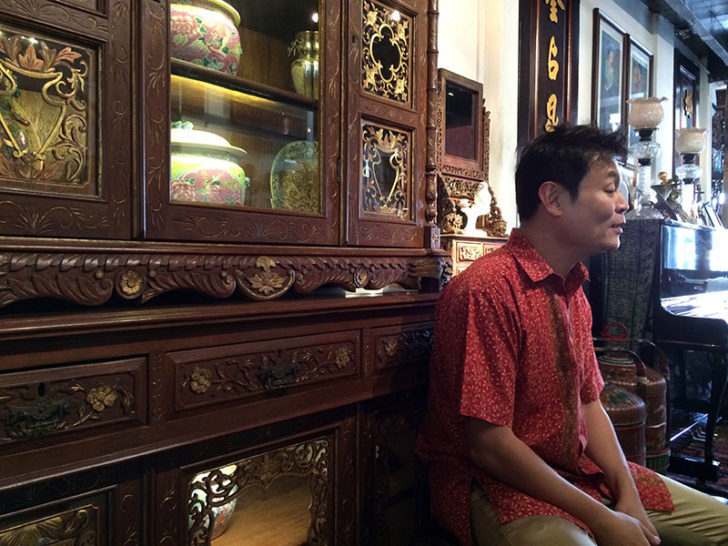
The Intan is a private home and museum, so it’s not a place where you can just stop by during scheduled business hours. However, you can easily make an appointment as well as pay extra for a dinner party with Peranakan cuisine. One person on our tour liked the tea so much she tried to buy some of Alvin’s stash. I was just happy to taste some of the brightly colored sweets.
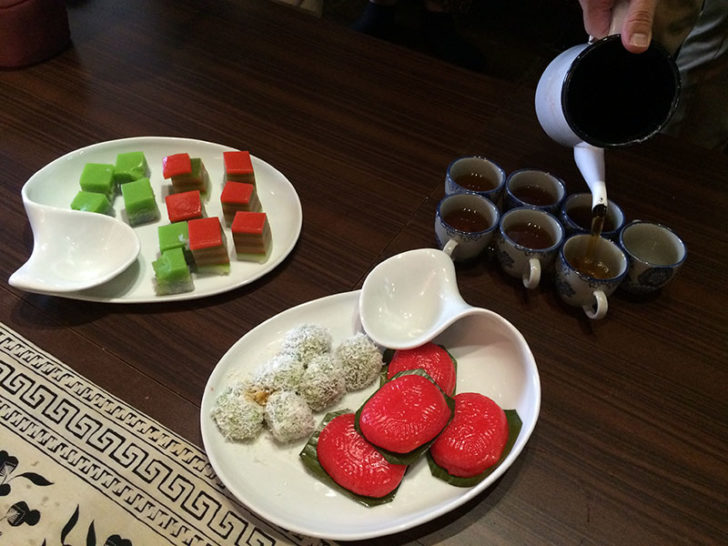
As a bonus for avgeeks, Alvin once worked as the station manager for Singapore Airlines in San Francisco. He even helped contribute to the interior design of Singapore Airlines’ A380, working with customers, vendors, and engineers. You can thank Alvin — among others — for a great experience the next time you fly with Singapore Airlines. (Check out Amol’s review of the A380’s exclusive Suites Class.) But be sure to stop by the Intan for a look at Singapore’s past once you land.
Full Disclosure: Singapore Tourism Board provided air and ground transportation, accommodation, meals, and a guide during my visit to Singapore. I received no other compensation, and STB did not review or recommend specific content prior to publication.

